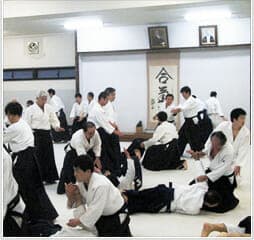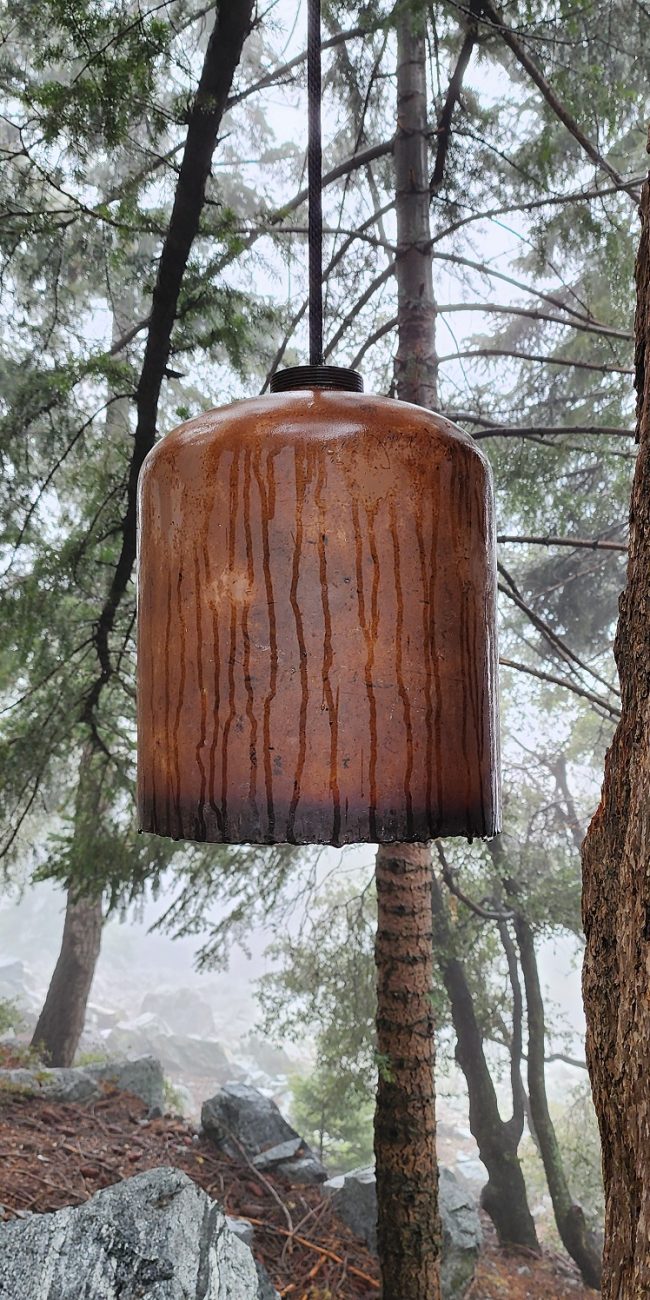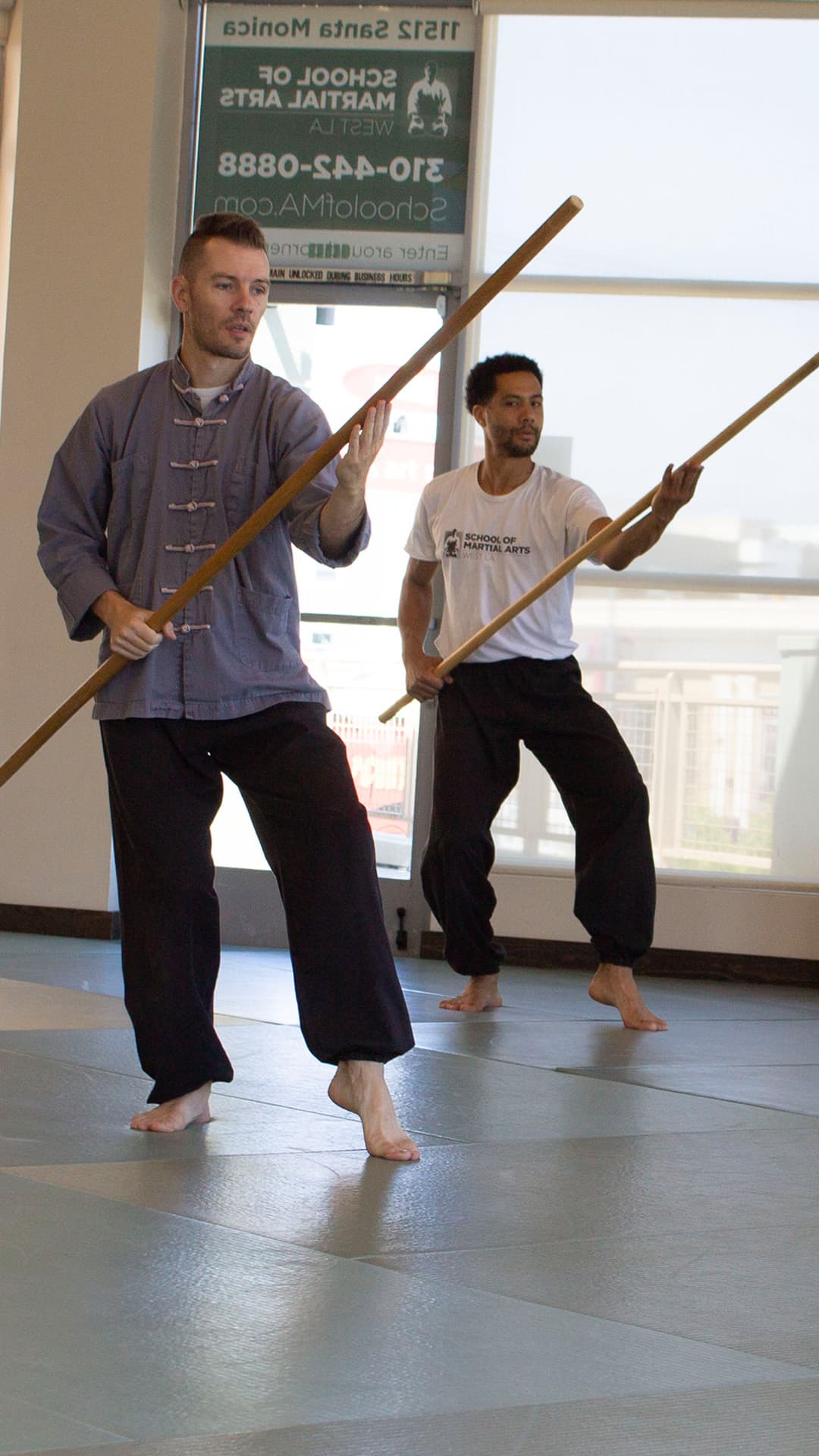Mind/Body
Because a martial arts workout engages the mind as much as the body, it is really a total being workout. In fact, people are often surprised to see how hard we work out while also having a strong philosophical component. Since we discuss mindfulness, meditation and the deeper aspects of practice, many people assume we aren’t interested in sweating. Just last week somebody said to me, “I’m interested in authentic martial arts, not crunchy California meditation”. This shows a complete misunderstanding of what “authentic martial arts” is. There is no real martial arts practice without meditation, mindfulness and the internal components. Kung Fu, the original martial art and foundation from which all others are derived, comes from Shaolin temple in China. I made a pilgrimage to Shaolin temple, while my teacher Sifu Brown studied there with the Shaolin monks. He and I both also visited and practiced at the Hombu dojo in Japan where Aikido originated. Anybody who knows anything about martial arts will tell you that Shaolin Kung Fu and Aikido are as authentic as any art you will find, and both emphasize the internal components as being at least as important as the external.
For a week, staying in Tokyo, nearly every day I woke up early (too early) and walked to Shibuya station to take the subway to Ueshiba’s Hombu Dojo in Shinjuku. Even during the day there were many students there, hard at work. One day I counted over 200 pairs of shoes in the downstairs lobby, too many to fit in the provided cubbies. I walked up 3 flights of stairs to the upper level where black belts were in the locker rooms getting ready for class. I put on my white gi and white belt and came out onto the mats to stretch. I was struck by the similarities of our practice. The opening ceremony, meditation and warm up all are done with reverence and complete attention to detail. The attitude with which the students practice is like ours: serious yet almost child-like in excitement.
The main difference between our students and those at the Hombu dojo is age. That school has been at the same location and with the same lineage of teachers for over 80 years. One of my favorite parts of practicing there was working with the senior students in the black belt class. Many of my partners were in their 70’s and 80’s, yet moved smoothly and powerfully. I’m convinced that one of the reasons those students maintain their youthful agility and strength is the mats they practice on. Their mats are incredibly hard traditional tatami (dried grass woven together) covered in a thin white cloth. To me, they felt like falling on plywood. Yet the students there took fall after fall, gracefully returning to their feet to continue practice. After 80 years, maybe my students will stop complaining about falling too.
The only way to maintain a practice like this for decades is to link it directly to the rest of your life. Physical practice has ups and downs. There are times when we can’t get to the dojo as often as we’d like, and at times we are sidelined by injuries. Yet when we can see how Kung Fu and Tai Chi impacts our everyday life, making us happier and better husbands, wives, parents, employees, etc., it’s impossible not to get excited and motivated to continue.




